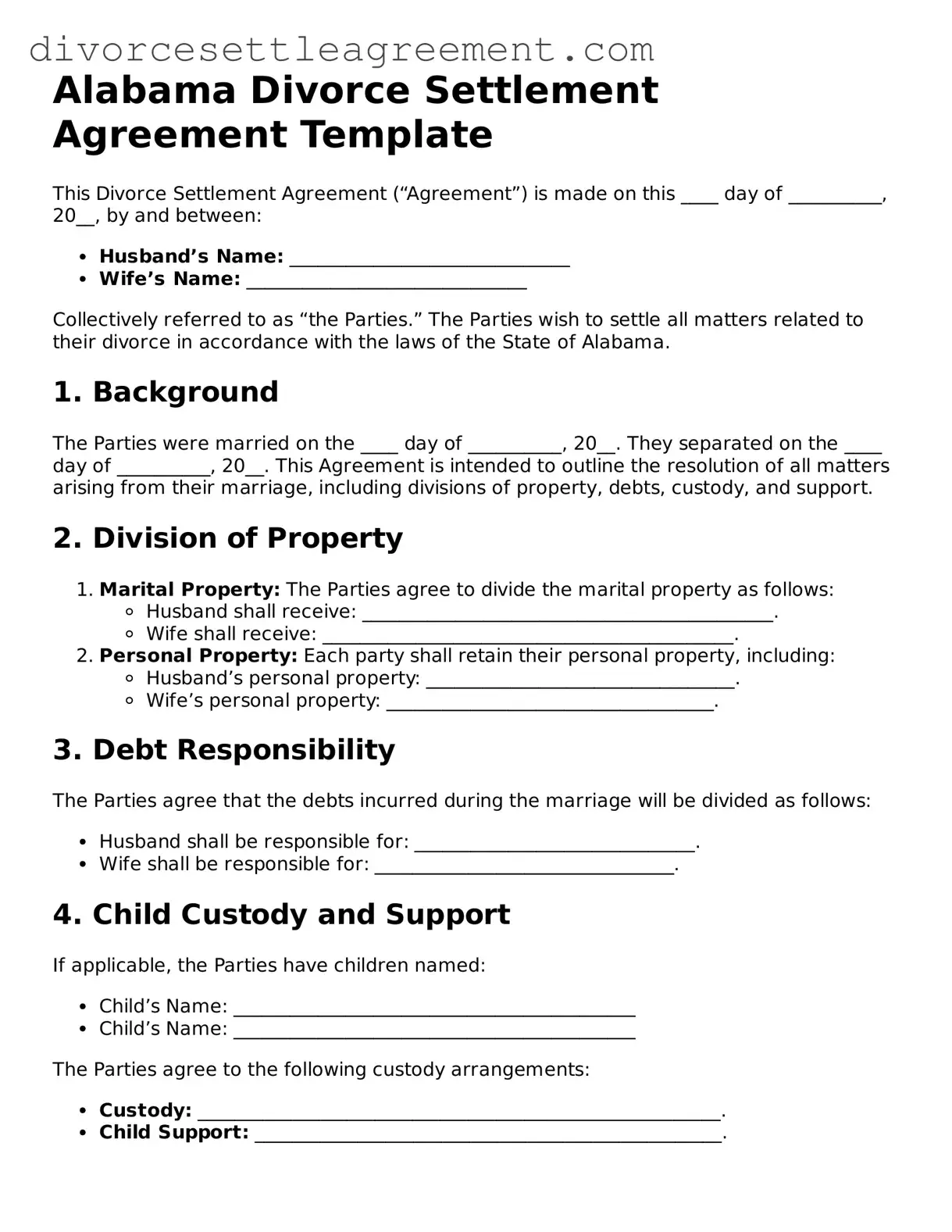What is an Alabama Divorce Settlement Agreement?
An Alabama Divorce Settlement Agreement is a legal document that outlines the terms and conditions agreed upon by both spouses during a divorce. This agreement typically covers issues such as property division, child custody, child support, and spousal support. It serves as a comprehensive plan that both parties must follow after the divorce is finalized.
How do I create a Divorce Settlement Agreement in Alabama?
To create a Divorce Settlement Agreement, both spouses should discuss and negotiate the terms they want to include. It is advisable to list all assets, debts, and any arrangements regarding children. Once both parties agree on the terms, the agreement should be written down and signed. While it's possible to draft this document without legal assistance, consulting with a lawyer can help ensure that all necessary legal requirements are met.
Do I need a lawyer to file a Divorce Settlement Agreement?
While hiring a lawyer is not mandatory, it is highly recommended. A lawyer can provide valuable guidance and ensure that the agreement is fair and legally binding. They can help identify potential issues and ensure that all legal requirements are met, which can prevent complications later on.
What happens if my spouse and I cannot agree on the terms?
If spouses cannot reach an agreement, they may need to consider mediation or arbitration. These processes involve a neutral third party who helps facilitate discussions and negotiations. If these methods fail, the case may go to court, where a judge will make the final decisions regarding the divorce settlement.
Can a Divorce Settlement Agreement be modified after it is signed?
Yes, a Divorce Settlement Agreement can be modified after it is signed, but only under certain circumstances. If there is a significant change in circumstances, such as a job loss or a change in the needs of a child, either party can request a modification. This typically requires filing a motion with the court and demonstrating the need for the change.
How is property divided in a Divorce Settlement Agreement?
In Alabama, property is typically divided based on the principle of equitable distribution. This means that the division is fair but not necessarily equal. Factors such as the length of the marriage, each spouse's financial situation, and contributions to the marriage are considered when determining how to divide property and debts.
What should I include in my Divorce Settlement Agreement?
Your Divorce Settlement Agreement should include details about the division of assets and debts, child custody arrangements, child support, and spousal support. It is also important to address any other relevant issues, such as health insurance and tax considerations. The more comprehensive the agreement, the less likely it is that disputes will arise in the future.
How long does it take to finalize a Divorce Settlement Agreement?
The time it takes to finalize a Divorce Settlement Agreement can vary widely. If both parties agree on the terms and all necessary paperwork is completed correctly, it may take a few weeks to a few months. However, if there are disputes or if the case goes to court, the process can take significantly longer. Being organized and cooperative can help expedite the process.
